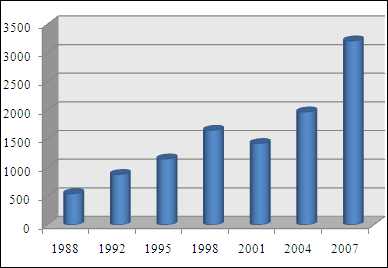Currency Trading Is Not The Monopoly Of The Nerds And The Geeks

The general perception is that any and every person who is involved in the business of trading of currency or foreign exchange is a person who has a super high IQ. To hear words and phrases like liquidity ratio, central bank intervention and inflationary demand makes us feel as if we are back in the boring and inherently avoidable lecture on economics that we were forced to attend in our college.
However, all these preconceived notions apart, forex or currency trading is not the domain for the super intelligent alone.
There is no doubt that you need brains to get involved in forex trading. Then, I bet you cannot name a single sphere of human activity that does not need the application of one's mind. A bit of brains and lot of research can help you make a tidy sum in currency trading.
Till recently, the forex trading market was not open to individual investors. To take part in the process of buying and selling of currency, you either had to be a big bank with lots of deposits and assets under your belt or you had to be a big financial institution that carried out the business of trading in forex as its primary activity. Today you do not need a lot of capital to earn money in currency trading. A few thousand dollars as the initial capital is sufficient to get you started.
The advantages of trading in currency are manifold. The biggest advantage is that the currency trading market is a market that remains open round the clock. No other financial market stays open and operation twenty-four hours a day. This round the clock functioning results in constant and immediate reflection of economic, political and social events. A smart investor can take advantage of the fluctuation to make huge profits.
Further, the forex market works without any centralized exchange. There is direct interaction between the persons involved in currency trading over the telephone or electronic network.
However, just because it is easy to enter the currency trading market does not mean it is easy to make profit in the currency trading market. It is very important to possess knowledge of the forex market. You will have to grasp and establish your command over basic concepts. You will have to understand the significance of the technical indicators of the functioning of the forex market. Trying to gain complete knowledge of the currency market without actually entering into the field is like trying to learn swimming without entering the water.
By arriving at a judicious combination of knowledge, instincts and risk, one can make a lot of money in the currency trading market, or the forex market as it is known as, with very little initial investment.
by Sara Chambers







